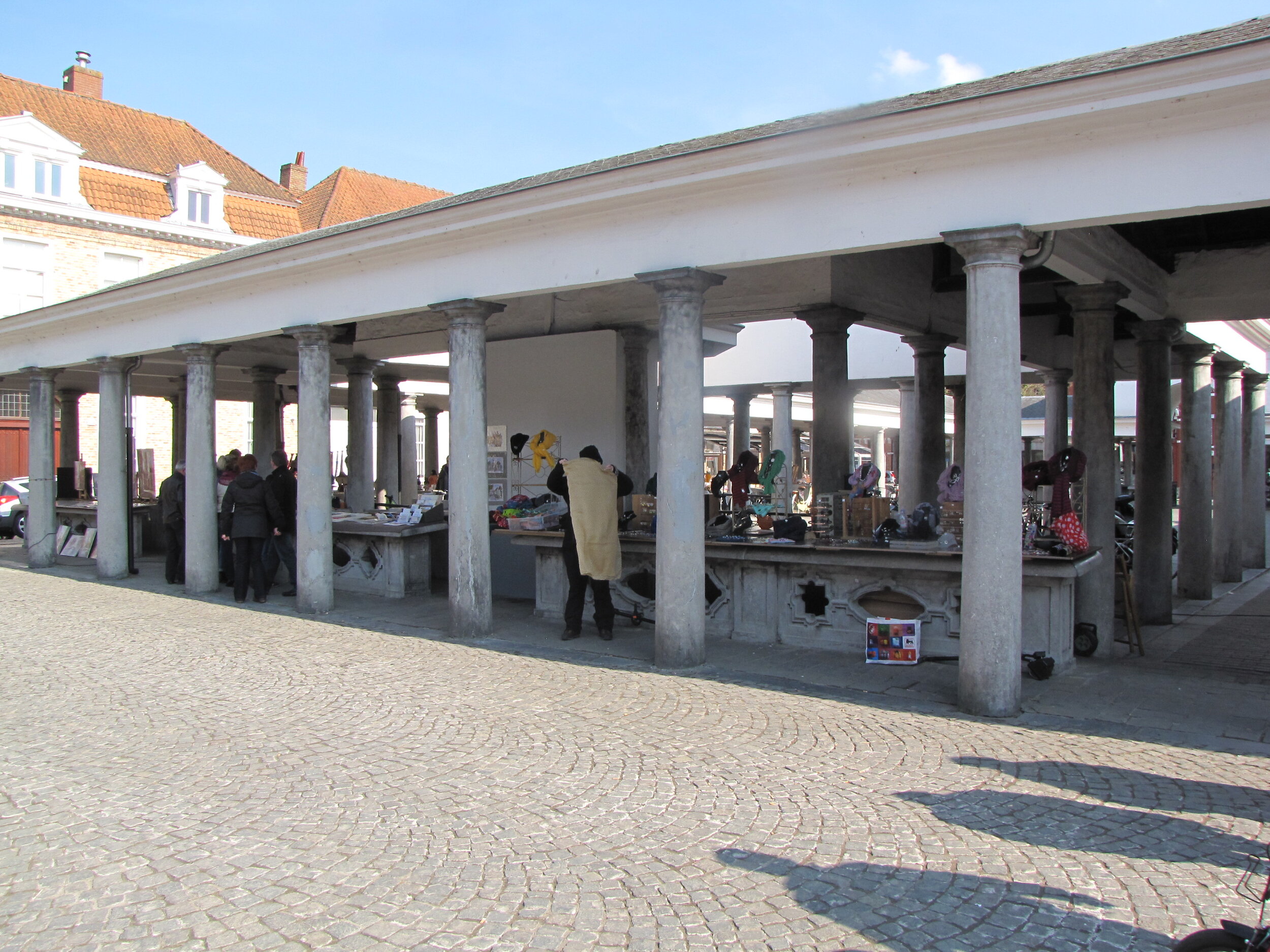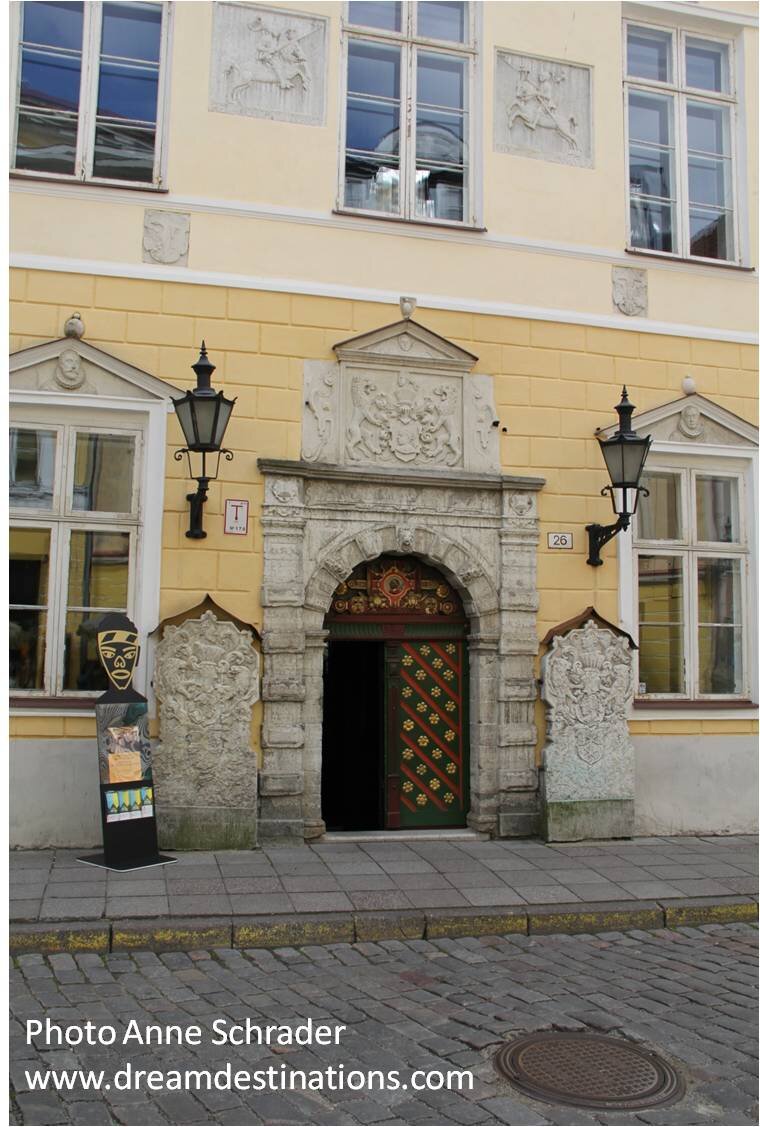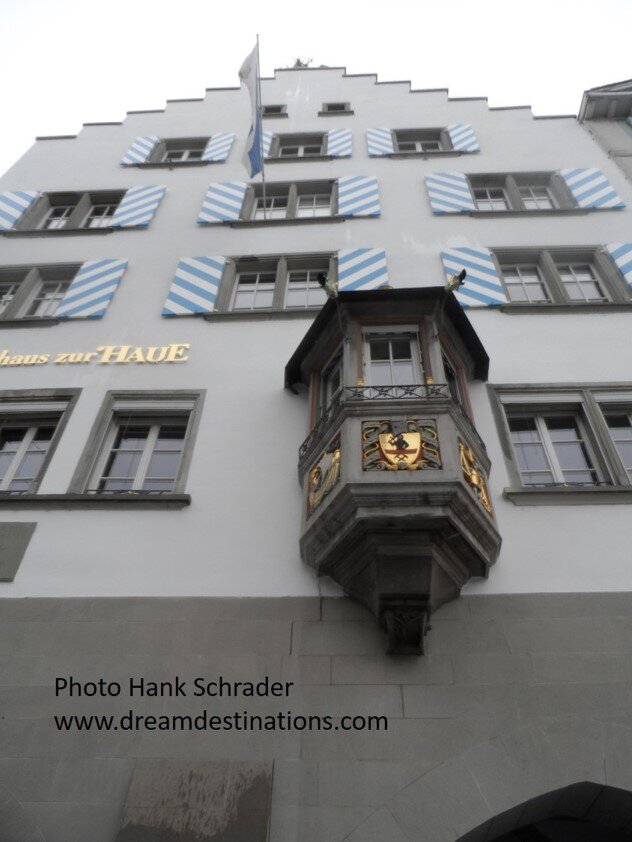European Guilds
By Hank Schrader, USMA ’71, Europe Destination & Europe River Cruise Expert
I recently wrote about the history of brands and our brand Dream Destinations. Several of my readers reached out to me and said they would like to know more about Guilds and see more of our pictures (doesn’t surprise me—Anne’s pictures are much better than my prose!)
So, being your obedient blogger, I went back in our over 6,000 pictures of our European adventures to provide you some of the great photos Anne has taken for your enjoyment.
I will recount a little about the history of guilds and how they changed society in Europe during the Middle Ages—it should be fun! The last part will be pictures of guild houses we have seen in Europe.
Ready for our journey? Let’s go!
What are Guilds?
Guilds are associations of artisans who controlled the practice of their craft and merchants that traded goods. There were two types of Guilds—Merchant Guilds and Craft Guilds. Each had a significant impact upon developing society a little over 1000 years ago or so.
In medieval cities, craftsmen tended to form associations based on their individual trade or skill.
In the Middle Ages, all craftsmen and most important merchants were members of guilds.
How Guilds Helped Change Medieval Society
Prior to the rise of Guilds, feudal society in Europe had 3 classes of people. These were the Nobility, Priests and Peasants. On the European continent, society was slowly changing after the collapse of the Holy Roman Empire, as a class of merchants began to emerge.
With trade expanding and a weakened nobility ruling class, merchants and trades people began to band together to promote their business interests. The key factor of their business interests was the free flow of goods produced or sold by the guild members without interference or as little as possible from nobles. Society now had 4 classes of people: Nobility, Priests, Merchants and Tradesmen, and Peasants.
Guilds generally flourished in areas of Europe from 1100 to 1500 or so.
By the 1300s, these guilds had developed sufficient power to preform functions more than just their business interests—they often became a form of quasi government. Many had Patron Saints, even had chapels and helped the less fortunate members of the guild and others in the community. This was especially true in the Low Countries of the Benelux region (shorthand for Belgium, Netherlands and Luxembourg).
These independent trading centers were often ruled by the guilds and their councils with a figure head noble ruler. Some guild members, called burghers became very wealthy and lent money to nobles (usually to help finance wars) and they actually had equal or more power than many nobles.
With their increased power and influence, the guilds built guild houses. These guild halls served as a place to hold meetings and often displayed their power and wealth.
These guild houses were often built near town halls, as merchants wanted to influence laws and regulations and, in some cases, served as ad hoc government centers. In England, for example, the guild halls actually turned into our modern day town halls.
The Key Goals of Guilds
With the key goal of preserving their business interests, guilds generally had 5 key goals. They were:
1) Establish a monopoly for a particular good or service within their area of influence;
2) They set and helped ensure standards of quality of goods and services;
3) They established standardized trading practices to help encourage the free flow of goods;
4) They established stable prices for goods and services due to their monopoly or virtual monopoly in a local area; and
5) They either became or sought to control local governments to help maintain their monopoly.
How Guilds help Transform European Commerce
The rise of towns and distinct divisions of labor helped take trade into an international dimension instead of the previous local only model. Stability in both prices and quality went up significantly. This was the beginning of modern commerce in Europe.
Merchant Guilds
In 1100 or so there was a growing class of merchants who no longer journeyed from villages or towns to peddle their goods. The rise of towns helped these merchants prosper—it was in their mutual interest to band together for protection and hire others to transport their goods. These groups became merchant guilds.
Merchant guilds were the first type of guilds to organize for their mutual benefit and added stability during times of political instability and offered some protection from greedy nobles. They also were the first type of guilds to dissolve (in the 1500’s and 1600’s) after other merchants gained better legal protections and could operate at less costs than guilds.
By 1300, merchant guilds covered most merchandise sold in a town and they often traded in long distance products by acquiring raw materials and having the craft guilds convert them into a product for sale—they made the initial and ending transactions.
Merchant guilds also conducted fish markets, ran taverns and had other trading activities for profit. The key difference between a merchant guild and a craft guild was no specialized technical knowledge or skill was required to be a member of a merchant guild as there was no need to create a master product—it usually only required enough money and education to conduct trades.
Merchant guilds were usually very prosperous and often the most important citizens of a town.
Craft Guilds
Craft guilds included work such as bakers, weavers, blacksmiths, masons, painters, metalsmiths, blacksmiths, butchers, leatherworkers, and even soap makers and candle stick makers.
The guild’s senior craftsmen controlled the working hours and conditions of work of their members. They also made sure work was of proper quality by setting standards and using apprenticeships to teach younger workers the skills and techniques they would need to succeed in their chosen trade. This was not an easy process.
First, there was an apprenticeship were the master craftsman controlled all aspects of the training and this could last several years—usually 5-9 years. Apprentices were provided food, shelter, education and clothing but no wages. Apprentices often started very young age. These were sought after positions for some families initially, who paid large sums to get their children into apprenticeships.
The next step was a journeyman with a little more freedom, they could earn wages and respect but again this could also last several years.
Finally, the person had to submit a work to be judged by master members of the guild before the craftsman could earn certification as a full-fledged master member, who could then set up their own workshop and train apprentices and journeymen.
Craft guilds not only set standards, they also had courts to levy fines for poor workmanship, or other disputes like unfair competition. In short, the guilds’ standards and rules governed all craft goods during this era.
An Example of How Merchant Guilds and Craft Guilds Worked Together
The wool trade in Brugge is an excellent example of how guilds controlled making cloth. The merchant guilds would buy the raw wool (often from the Cotswolds in England) and sell the woven cloth after the wool was processed. The craft guilds would dye and weave the raw wool into cloth. By working together, all guilds involved in producing a product benefited and made money.
This what a typical loom might look like in the Middle Ages but this picture was taken in 2014 in Brugge by Anne
Decline of Guilds
Guilds held significant power but many of their policies led to their eventual demise. They controlled prices and determined what amount could be charged for goods (they considered it a fair price) but this stifled competition. Merchants who were not guild members often had to buy the right to sell goods from the guild and were told what price was acceptable for their merchandise. Some merchants started forming companies and bypassed the guild process.
Particularly upsetting to craftsman were the long process to become an accepted master craftsman member of the guild. Apprenticeships initially were highly sought after but eventually craft membership became so exclusive and was often only reserved to direct relatives that it could not be sustained.
As you can imagine, significant wealth and status came to master craftsman and the fewer there were, the more powerful and wealthy they were.
Merchant guilds and craft guilds often came into conflict of governing a city or town. Since the merchant guilds were wealthier, they tended to dominate governments. Often, the more numerous craft guilds lost out to the merchants and suffered economically by laws and practices. Friction was inevitable.
The rise of the company where merchants and craftsmen were combined together to increase productivity, and was more efficient. It also broke the monopoly of the guilds.
Cool Guildhalls
With guilds now just a part of history, they left some impressive buildings that now often serve as museums or commercial establishments such as restaurants. Here are some pictures of guild houses in Flanders (Antwerp, Brugge, Brussels, and Ghent); a part of the Hanseatic League in Tallinn; and Zurich.
Flanders
Antwerp—most of the remaining guild halls are on Market Square or very near market square (there are at least 10). While most guild halls were for merchants and artisans, one of the guild halls was for a group of archers, who held competitions and were a social group.
Butchers Guild Hall Antwerp
7 Guild Halls on the north side of Market Square. From left to right (they are numbered using odd numbers) #3; #5 Coopers House; #7 Archers House; #9; #11 Grocers House; #13; #15 (on the end).
Detail of 5 guild houses with their roof ornaments. These are from left to right (they are numbered using odd numbers) #3; #5 Coopers House; #7 Archers House; #9; #11 Grocers House (on the end).
Detail from the Archer’s Guild House #7 of St. Michael (their patron saint) slaying the dragon in Antwerp Market Square.
Detail of one of the roof ornaments on the southeast side of market square. It is either from the Tailors House (#38) or the Carpenter’s House (#40).
Brugge—there are some standalone guild halls, but most were on Market Square.
Some of these buildings around market square in Brugge were guild houses but the area was renovated in 1995, so many are hard to identify as they were remodeled.
Market Square Brugge
Market Square Brugge
Symbol of the Tanners in Brugge—2 lions with a shield. There is no remaining guild houses here. This statute is in the small square is named Tanners Square after the tradesmen who used to work here. On the other side of the square is the fish market. It now is an area for restaurants and a place to take canal boat rides around Brugge.
The Fish Market in Brugge where Merchants used to sell the catch of the day. Now it is a craft market.
Brussels—the grand palace (the main square in Brussels) has some of the most impressive guild halls. Some claim this is the most beautiful square in all of Europe and these guild halls help add to this impressive square.
Guild House of the Brewers
Detail of Top of the Guild House of Brewers
Corporation of Butchers Guild House
House of the Corporation of Tailors
Ghent—here the majority of the remaining guild halls are located on the Graslei Canal.
Tanners Guild House
Old Fish Market Guild Hall
Graslei Canal Guild Houses
Guild House of the Free Boatman
On the left is the old corn warehouse. On the right side this is the House of the Grain Weighers Ghent
Mason’s Guild Hall
Hanseatic League
Trade in the Baltic region was controlled by a special league, called the Hanseatic League. It was started in Germany and reached from Bergan, Norway to Tallinn, Estonia. By far, Bergen has the best remaining guild halls, but the walled city of Tallinn has some excellent examples of guild halls. Guilds in Estonia often were combined guilds of merchants and artisans.
Great Guild Hall Tallinn, Estonia. It was a combined merchant and artisan guild hall, It is now the Estonia History Museum.
One of the most unique guilds was the Brotherhood of Blackheads. They are an obscure guild that are only known to exist in Riga, Latvia and Tallinn, Estonia.
Sign outside of the House of the Blackheads, Tallinn, Estonia.
Ornate door entrance to the Brotherhood of Blackheads. It was a guild of shipowners, merchants and foreigners.
Zürich—there are 14 Zunfthaus (Guild Houses) in the old town area of Zürich.
Blacksmiths Guild Hall Zürich
Merchants Guild Hall Zürich
Weavers Guild Hall Zürich
Wine Growers and Merchants Guild House Zürich
My Final Thoughts
What a great look at how society developed in Europe! Anne really does take some great pictures. Travel with understanding a little about what you are seeing makes a big difference and we would be happy to help you visit any of these great places in Europe and learn more about how Europe developed!
When you are spending your hard-earned money for a vacation, you want an advisor who can match you with the right trip. You want someone who will understand your expectations and fuel your anticipation (or excitement) to get you the best possible trip experience. And, you want someone who can help you with the decision making process. We think we have all these qualities.
Whatever your Dream Destinations are, we are here to help you get the best possible vacation based on what is important to you! We will provide you high quality, expertly planned travel. Please give me a call 713-397-0188 (Hank) or email me at hschrader@dreamdestinations.com. We want to help you: Savor life…make memories…Visit Dream Destinations! Your journey begins here!
HANK is a certified Western European Destination Specialist (DS) who has been traveling to Europe for 49 years. He is also an Accredited Cruise Counselor (ACC), conferred by the Cruise Line International Association (CLIA). This recognized expert in cruise and leisure travel is a retired Army Officer, and taught World Geography for 8 years. He is a `71 graduate of West Point and has earned 2 master’s degrees. His other Certifications:
AmaWaterways River Cruise Specialist
Viking River Cruise Specialist
Scenic River Cruise Specialist
Emerald Waterways Specialist
Avalon Waterways Specialist
Brit Agent
































